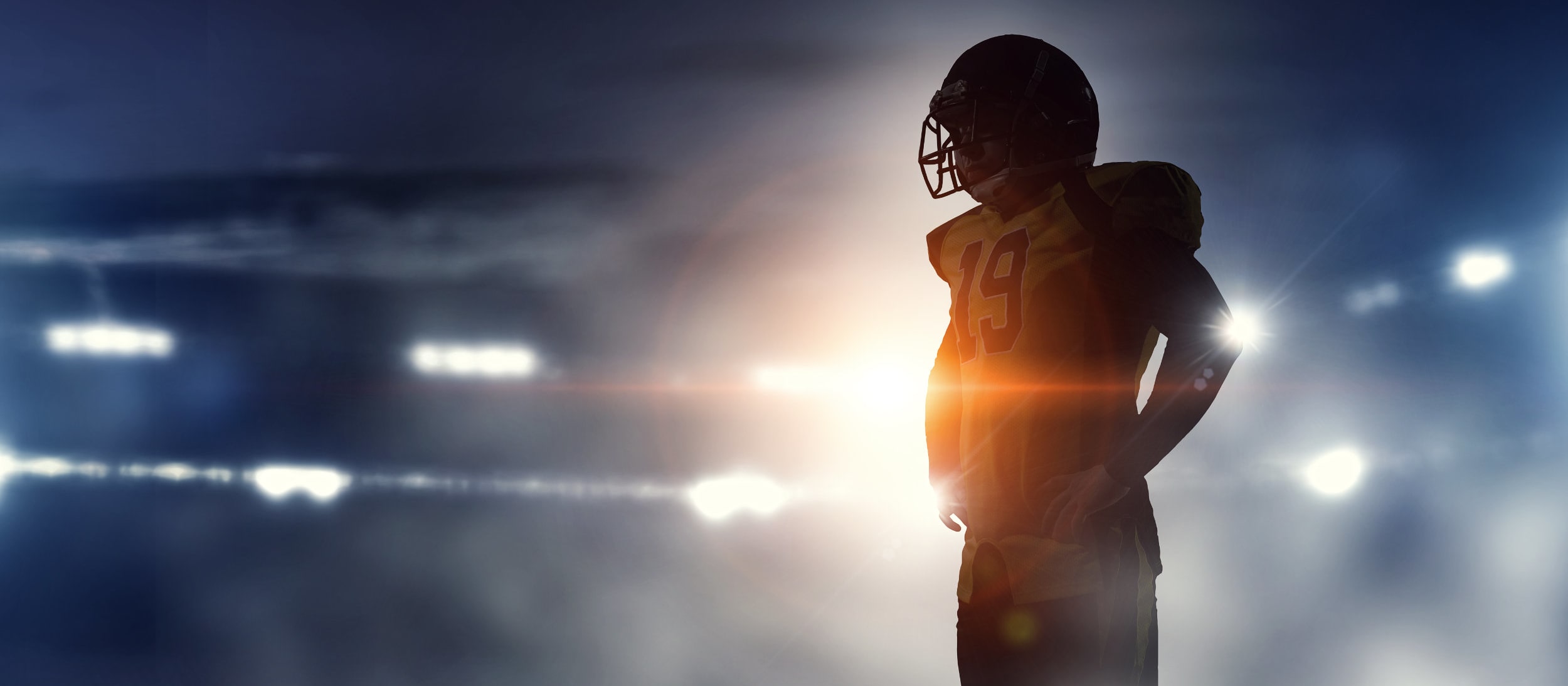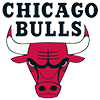1. Sanu can Play the Houshmandzadeh Role for CIN
Although his fantasy value was in a flux while the Bengals sorted out the rotation between him, Armon Binns and Brandon Tate, the fact that Cincinnati has recently settled on Mohamed Sanu as the main receiver opposite A.J. Green means he should be owned in most formats. With Green serving as the team's main playmaker and top wideout in general, Sanu will be expected to do little more than provide reliable yardage on short routes, including in the red zone, but he's a great fit for the role and should produce in it. There's a bit of a Chad Johnson-T.J. Houshmandzadeh parallel (though Green is already better than Johnson ever was).
His lack of speed and explosiveness means he's unlikely to capitalize on his single coverage with big plays, but Sanu has a big catch radius thanks to his height (6-foot-2), reach (33.5-inch arms) and hands (10 1/8 inches), which makes him a prime target on short routes and jump balls. It doesn't hurt that he got a lot of practice tracking down wayward passes in heavy traffic thanks to weak quarterback play at Rutgers. Quarterback Andy Dalton done a good job of utilizing Sanu's strengths as a chain-mover and end-zone threat, throwing 10 first downs and four touchdowns Sanu's way on just 16 receptions.
With Dalton becoming an above average starting quarterback and Green drawing a disproportionate amount of defensive attention, Sanu has the skills and situation
1. Sanu can Play the Houshmandzadeh Role for CIN
Although his fantasy value was in a flux while the Bengals sorted out the rotation between him, Armon Binns and Brandon Tate, the fact that Cincinnati has recently settled on Mohamed Sanu as the main receiver opposite A.J. Green means he should be owned in most formats. With Green serving as the team's main playmaker and top wideout in general, Sanu will be expected to do little more than provide reliable yardage on short routes, including in the red zone, but he's a great fit for the role and should produce in it. There's a bit of a Chad Johnson-T.J. Houshmandzadeh parallel (though Green is already better than Johnson ever was).
His lack of speed and explosiveness means he's unlikely to capitalize on his single coverage with big plays, but Sanu has a big catch radius thanks to his height (6-foot-2), reach (33.5-inch arms) and hands (10 1/8 inches), which makes him a prime target on short routes and jump balls. It doesn't hurt that he got a lot of practice tracking down wayward passes in heavy traffic thanks to weak quarterback play at Rutgers. Quarterback Andy Dalton done a good job of utilizing Sanu's strengths as a chain-mover and end-zone threat, throwing 10 first downs and four touchdowns Sanu's way on just 16 receptions.
With Dalton becoming an above average starting quarterback and Green drawing a disproportionate amount of defensive attention, Sanu has the skills and situation to turn into a high-floor option in most formats despite his low ceiling, perhaps even to the tune of WR2 production by the time next year arrives. Even in the meantime he's a WR3 consideration.
2. Bryce Brown has the Talent to Keep Producing
It's easy to look at a player like Bryce Brown and his status as a seventh-round pick and assume his huge game against Carolina on Monday was a bit of fluke, but this is one case where the player's pedigree is of much higher quality than his draft placement indicates.
It was just three years ago that Brown was generally considered college football's top running-back recruit, and he showed Monday that he hasn't lost a single bit of the athleticism that made him so sought after during the recruiting process. Unfortunately for coach Derek Dooley at Tennessee, Brown decided to leave the Volunteers after his freshman year, merely citing personal reasons. So with just 463 yards and three touchdowns to his name as a runner after 2009, Brown sat out the 2010 season before finally settling on Kansas State as a transfer destination in June 2011.
But the drama didn't end there for Brown, and his draft stock steadily sank all the while. Despite facing only modest competition for the starting running-back role, he didn't earn an off-the-bench role with the Wildcats, let alone a workhorse one. Brown ultimately appeared in just three games for Kansas State, receiving a perplexing total of three carries for 16 yards. And then, after failing to earn a job as a college backup, he went to the NFL.
The fact that Brown was drafted even in the seventh round shows what a rare athletic talent he is - few players would be drafted after being involved in as many shenanigans and as little production as Brown, yet the Eagles were willing to invest hundreds of thousands of dollars in him almost solely based on his high school film and pre-draft workouts. As Monday's game showed, the Eagles probably made a wise decision, as Brown looked like a potential above average starter, bolting for 178 yards and two touchdowns on 19 carries.
Although the Carolina defense isn't anything to be afraid of, Brown conclusively showed breakaway explosiveness and long speed against the Panthers despite checking in at 223 pounds. With his talent level, Brown should be considered an RB2 in most formats as long as LeSean McCoy is out with his concussion.
3. Titus Young isn't Catching Ryan Broyles, Ever
Even if Titus Young manages to get back into the good graces of coach Jim Schwartz and the rest of the Detroit Lions, his days of competing for the second wide receiver role in Detroit are over. Ryan Broyles owns that now, and from now on Broyles is at least a WR3 in nearly all formats.
The most obvious problem for Young is that he might be the league's biggest headcase at the moment, but there are other reasons why he'll struggle to become more than peripheral player in the Detroit offense. The biggest reason is Broyles himself, who's just better than Young. He's not a field-stretching presence on the level that Young is, but Broyles is one of the most natural route runners among recent draft prospects and has an instinctive ability to find soft spots in coverage, which probably can't be taught. Particularly in an offense where Calvin Johnson is already serving as the downfield threat, the reliability Broyles provides on the short and intermediate routes is especially valuable.
Broyles' superior value to Young's shows in the numbers the two have put up this year. Although he's a rookie just barely one year removed from a torn ACL, Broyles has pulled in 21 of his 31 targets (67.7 percent) for 307 yards (9.9 YPT) while Young has 33 catches on 56 targets (58.9 percent) for 383 yards (6.8 YPT). And despite all his advertised explosiveness, Young averages just 11.6 yards per catch while Broyles is going at a rate of 14.6 yards per catch. It's not even close - Broyles is the better player, and he might widen his gap as his knee returns to full health. Broyles looks like he'll be a WR2 next year at the latest.
4. He'll be Hit-or-Miss, but Wilson's Hits will be Big
Although it's unclear why the team would invest a first-round pick in him given its inability to tolerate flaws that were well known ahead of time, it's understandable why Giants coaches felt uneasy about the idea of giving snaps to David Wilson. He's a free-spirited personality with an untamed demeanor, traits that don't mix especially well with a seemingly rigid fogy like Tom Coughlin.
The dissonance between the two is compounded by Wilson's lack of polish when it comes to fundamentals. Virginia Tech didn't ask Wilson to pass block much and seemingly didn't discourage his improvisation as a runner, so he came into the league raw as a passing-down back and has a tendency to ignore direction once he gets the ball. He's unpredictable. Coughlin, more than most coaches, will hold that against a player, especially one without a track record.
What Coughlin and company fail to recognize is that the unpredictability works both ways. Although Wilson doubtlessly needs to refine his game, he does seemingly dumb things like abandon his blockers and run backward because he's one of the few players who can successfully reverse field. Luckily for both Wilson and Giants coaches, the (regular) season-ending leg injury to Andre Brown means that the Giants' personnel limitations at running back will overrule the team's skittishness regarding Wilson, and they'll better learn how to utilize him now that they have to put him on the field more often.
Fantasy owners, meanwhile, will have to deal with the same double-edged sword - until he sharpens his instincts and shows a better ability to utilize his blockers and run with patience, Wilson figures to be hit-or-miss in the box score. He likely won't earn the goal-line role that made Brown so useful as an in-season pickup, so the consistency won't be there, but Wilson's home-run ability will allow him to post numbers in bunches. For every six-carry, 13-yard stretch (Week 12) there will be another stretch with 79 yards and a touchdown on nine carries (Weeks 5 and 6). He should be a weak RB3 or strong RB4 with Brown out and Ahmad Bradshaw's foot perpetually ailing, assuming the Giants don't bring in another runner to compete for snaps.
5. Jarius Wright Looks Like a Future Starter for MIN
Rookie fourth-round pick Jarius Wright was only active for Minnesota's last two games, but the rookie is making a quite an impression. Just as he did in college, Wright is showing an ability to stretch the field, and the Vikings could use that sort of threat opposite Percy Harvin, who is more of a short- and intermediate-range workhorse receiver.
Although he was probably the least-heralded prospect of an Arkansas group of Cobi Hamilton, Joe Adams and Greg Childs, Wright was fairly easily the most productive of the group from 2009 to 2011, catching 149 passes for 2,586 yards (17.4 YPC) over that span while scoring 22 times. But he doesn't have obvious burning speed, and he somehow looks even smaller than the 5-10, 180, he's listed at, so it was generally assumed that Wright's skills wouldn't translate so well to the NFL.
Based on the last two Minnesota games, though, that assumption seems to be off the mark. Facing defenses that allow 6.8 yards per pass (Detroit) and 6.1 yards per pass (Chicago), Wright had no trouble getting off to a fast start in his first NFL appearances, catching 10 passes on 15 targets for 114 yards and a touchdown. Those who snagged Wright for dirt cheap in dynasty leagues have to feel optimistic, and those who need some depth with upside might want to consider adding Wright if he's available at a reasonable cost. He's done well the last two weeks, and Jerome Simpson and Michael Jenkins have shown that they probably don't have noteworthy futures in Minnesota.

























